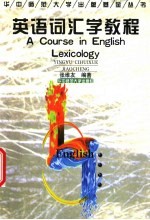图书介绍
英语词汇学教程pdf电子书版本下载

- 张维友编著 著
- 出版社: 武汉:华中师范大学出版社
- ISBN:7562216851
- 出版时间:1997
- 标注页数:309页
- 文件大小:8MB
- 文件页数:326页
- 主题词:英语-词汇-教材
PDF下载
下载说明
英语词汇学教程PDF格式电子书版下载
下载的文件为RAR压缩包。需要使用解压软件进行解压得到PDF格式图书。建议使用BT下载工具Free Download Manager进行下载,简称FDM(免费,没有广告,支持多平台)。本站资源全部打包为BT种子。所以需要使用专业的BT下载软件进行下载。如 BitComet qBittorrent uTorrent等BT下载工具。迅雷目前由于本站不是热门资源。不推荐使用!后期资源热门了。安装了迅雷也可以迅雷进行下载!
(文件页数 要大于 标注页数,上中下等多册电子书除外)
注意:本站所有压缩包均有解压码: 点击下载压缩包解压工具
图书目录
Chapter 1 The Basic Concepts of Words and Vocabulary 1
1.1 The Definition of a Word 1
1.2 Vocabulary 3
1.3 Sound and Meaning 3
1.4 Sound and Form 4
1.5 Classification of Words 7
1.Basic Word Stock and Nonbasic Vocabulary 7
2.Content Words and Functional Words 13
3.Native Words and Borrowed Words 14
Questions and Tasks 18
Chapter 2 The Development of the English Vocabulary 20
2.1 The Indo-European Language Family 20
2.2 Three Phases of the Historical Development 22
1.Old English 23
2.Middle English 25
3.Modern English 28
1.Receptivity,Adaptability and Heterogenity 30
2.3 General Characteristics 30
2.Simplicity of Inflection 31
3.Relatively Fixed Word-order 31
2.4 Foreign Elements in the English Vocabulary 32
1.Latin 32
2.Greek 35
3.French 37
4.Scandinavian 41
5.Other Foreign Elements 43
Questions and Tasks 48
Chapter 3 Word Structure and Word Formation 52
3.1 Morphological Structure of Words 52
1.Morphemes 52
2.Allomorphs 53
3.Types of Morphemes 54
4.Root,Stem,Base 58
3.2 Word Formation 60
1.Affixation 62
2.Compounding 78
3.Conversion 86
4.Blending 96
5.Clipping 98
6.Acronymy 100
7.Back-formation 102
8.Sound Reduplication 104
9.Commonization of Proper Names 105
Questions and Tasks 111
Chapter 4 Word Meaning and Componential Analysis 119
4.1 Word Meaning 119
1.Reference 119
2.Concept 120
3.Sense 121
1.Onomatopoeic Motivation 122
4.2 Motivation 122
2.Morphological Motivation 123
3.Semantic Motivation 123
4.Etymological Motivation 124
4.3 Types of Meaning 124
1.Grammatical Meaning and Lexical Meaning 125
2.Conceptual Meaning and Associative Meaning 126
4.4 Componential Analysis 132
Questions and Tasks 137
Chapter 5 Sense Relations 140
5.1 Polysemy 140
1.Two Approaches to Polysemy 141
2.Two Processes of Development 143
5.2 Homonymy 146
1.Types of Homonyms 146
2.Origins of Homonyms 147
3.Differentiation of Homonyms from Polysemants 148
4.Rhetoric Features of Homonyms 149
1.Definition of Synonyms 150
5.3 Synonymy 150
2.Types of Synonyms 151
3.Sources of Synonyms 152
4.Discrimination of Synonyms 154
5.4 Antonymy 160
1.Types of Antonyms 160
2.Some of the Characteristics of Antonyms 163
3.The Use of Antonyms 166
5.5 Hyponymy 168
5.6 Semantic Field 171
Questions and Tasks 176
Chapter 6 Changes in Word Meaning 186
6.1 Types of Change 187
1.Extension of Meaning 187
2.Narrowing of Meaning 189
3.Elevation of Meaning 191
4.Degradation of Meaning 192
5.Transference of Meaning 193
6.Euphemism 196
6.2 Mechanism of Change 197
6.3 Causes of Change 201
1.Extra-linguistic Factors 201
2.Linguistic Factors 204
Questions and Tasks 206
7.1 Types of Context 210
Chapter 7 Meaning and Context 210
1.Extra-linguistic Context 211
2.Linguistic Context 214
7.2 The Role of Context 216
1.Elimination of Ambiguity 217
2.Indication of Referents 218
3.Provision of Clues for Inference of Word-meaning 219
Questions and Tasks 223
8.1 Characteristics of Idioms 225
1.Semantic Unity 225
Chapter 8 English Idioms 225
2.Structural Stability 226
8.2 Classification of Idioms 228
1.Idioms Nominal in Nature 230
2.Idioms Adjectival in Nature 230
3.Idioms Verbal in Nature 231
4.Idioms Adverbial in Nature 232
5.Sentence Idioms 233
1.Stylistic Features 234
8.3 Use of Idioms 234
2.Rhetorical Features 237
3.Variations of Idioms 242
Questions and Tasks 246
Chapter 9 English Dictionaries 251
9.1 The Development of the Dictionary 252
1.Early Glossaries and Word Books 252
2.Modern English Dictionaries 253
3.American Dictionaries 255
9.2 Types of Dictionaries 257
1.Monolingual and Bilingual Dictionaries 257
2.Linguistic and Encyclopedic Dictionaries 258
3.Unabridged,Desk and Pocket Dictionaries 259
9.3 Using the Dictionary 267
1.Choice of Dictionaries 267
2.Making Full Use of the Dictionary 271
Questions and Tasks 276
Chapter 10 Aspects of Vocabulary Learning 278
10.1 Vocabulary Storage 279
10.2 Schematic Learning 280
10.3 Learning by Lexical Phrases 281
10.4 Learning Words in Discourse 282
1.Cohesion 283
2.Discourse Markers and Organizers 286
Questions and Tasks 291
REFERENCES 292
词汇学术语英汉对照表 298